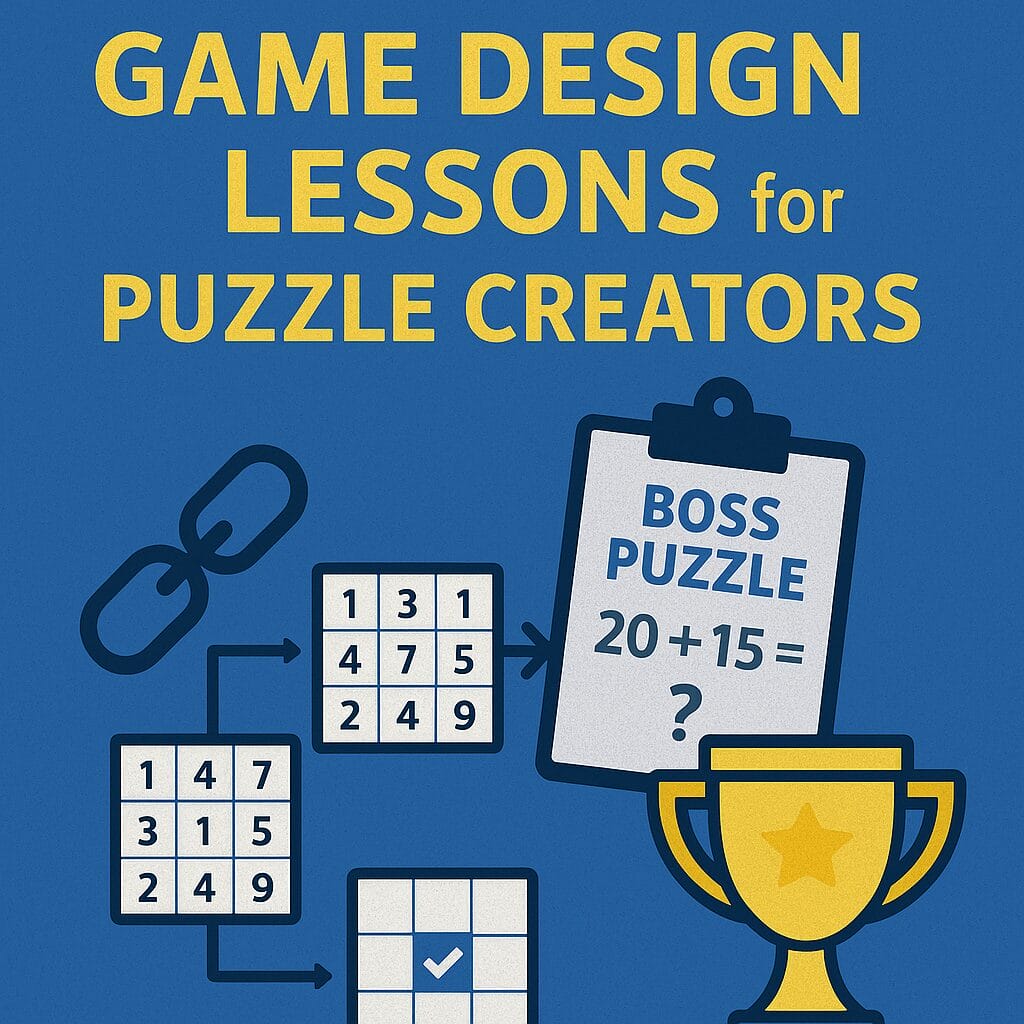What Addictive Games Do That You Can Steal
Why Puzzle Books Often Fall Flat
You put together dozens of great puzzles. The layout looks solid. The challenges are fair.
And yet… readers solve one or two and drop off.
Meanwhile, game apps keep players coming back daily. They’re addictive — in a good way.
What are they doing that puzzle books aren’t?
It’s not about fancy visuals. It’s about structure. And you can borrow those principles — without writing a single line of code.
What Addictive Games Do That You Can Steal
The best game apps build engagement loops:
- Progression: clear sense of moving forward
- Feedback: action creates a visible response
- Challenge Scaling: harder as you go, but not randomly
- Narrative or Mission: you feel like you’re completing something
Puzzle books can tap into the exact same psychology — by designing structure and flow, not just difficulty.
Step 1: Add Chain Mode
In Chain Mode, each puzzle’s answer becomes part of the next one.
This creates momentum. The reader isn’t just solving — they’re progressing.
Example:
- Puzzle 1: Math Maze → result: 14
- Puzzle 2: Starts with “14 + ? = ___”
Suddenly, they care about the outcome — because it connects to what’s next.
✅ Works with: Math Mazes, Sudoku Pick and Place, logic puzzles (using one symbol type).
Step 2: Use Boss Puzzles to Create a Climax
Game apps always have a big challenge near the end — a level that says, “You made it this far. Can you finish it?”
That’s exactly what a Boss Puzzle does.
It uses results from earlier puzzles to create a final challenge that’s only solvable if the player has followed the path.
🧠 Reminder: Boss logic works best when puzzles share a common format (all numbers, all Roman numerals, etc.)
Step 3: Introduce Stakes or Progression
You don’t need a storybook. Just some simple mechanics that mimic games:
- Name sections (“Chapter 1: Logic Depths”)
- Add progress meters (e.g. “You’ve collected 3 of 5 keys”)
- Use map-like visuals (zones, islands, or color blocks)
- Include a visual boss gate (“Needs 4 answers to unlock”)
These small elements build anticipation and payoff — which is what games do best.
Step 4: Time-Based Pacing
Apps don’t dump 100 levels at once. They space it out.
Try:
- A “5-day challenge” format
- A weekly puzzle with a final Sunday Boss
- A daily unlock email or print worksheet
Pacing builds ritual. Ritual builds habit.
Case Study: Meta Puzzles in Action
- A math maze creator released a 7-day chain where each maze revealed a code
- A Sudoku Pick and Place puzzle set used 4 Roman numeral puzzles to unlock a logic boss puzzle
- A newsletter ran a 5-day challenge with a final “boss solve” — it got 3x the shares compared to regular puzzles
All of these used print-only formats.
No screens. Just smart structure.
You Don’t Need to Build a Game App
You just need to think like a game designer.
Instead of asking:
“Is this puzzle hard enough?”
Ask:
“Does this puzzle make the next one more meaningful?”
Game mechanics aren’t about tech — they’re about motivation.
And that’s something every puzzle book can learn.
Try This
- Add a chain of 3 puzzles that feed into each other
- Design a final Boss Puzzle that uses 2–3 earlier results
- Add section names, visual gates, or ‘quest’ style framing
Watch how engagement changes.
Further Reading
- The Secret to Getting Solvers to Come Back Tomorrow
- How to Design Puzzle Books That Actually Stick the Landing
- Designing Puzzle Books That Feel Like Quests, Not Worksheets

